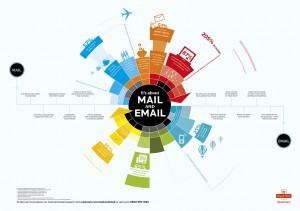Are the days of online display ads that direct consumers to buy now coming to an end? These days, more and more brands are directing consumers to like the brands’ Facebook pages or follow branded Twitter profiles, and companies like Flite are allowing brands to do it with unique interactive display ads.
Remember when online display ads were static images or animated gifs? A consumer clicked on a display ad and would be taken to the brand’s website to learn more or make a purchase? With ads like the ones offered through Flite, brands can engage consumers and those consumers never have to leave the originating website if they don’t want to.
Andrew Adam Newman of the New York Times described a recent campaign created by Flite for Mrs. Meyers, a cleaning brand. The display ad used in the campaign looked like a standard ad until you hover your mouse over it. That’s when the ad becomes engaging. The Mrs. Meyers ad expands to show several interactive options. Click to see real-time Facebook wall posts from the brand, Twitter users posting about the brand, or a video about the brand. Consumers don’t leave the website where they saw the ad unless they click on specific buttons or links within the ad.
Many brands use these interactive ads as tools to increase Facebook page likes, Twitter followers, and YouTube brand channel subscribers. Tracking data shows that these types of ads are excellent at increasing consumer brand engagement and click throughs. According to the New York Times article, consumers spent an average of 30 seconds interacting with the Mrs. Meyers ads, which is significantly more than the average time spent with other online ads of just 11 seconds. Furthermore, Google reports that click-through rates for display ads that lead consumers away from a website typically average one in a thousand. For the Mrs. Meyers ad, 35 out of every 1,000 users clicked through to the Mrs. Meyers site destinations.
Moving from a static online ad to an interactive ad that has the opportunity to engage people enough that they willingly click through to learn more and engage with the brand further is incredible and more brands are sure to jump onboard with this trend. When these interactive ads lead to additional interactive and engaging destinations such as branded Facebook pages and Twitter profiles, brands have an opportunity to deliver more meaningful content and deepen relationships with consumers who have indicated that they want to learn more by interacting with the original ad and clicking through. What’s not to like from a brand perspective?
What do you think about interactive display ads and the shift from direct response to direct like or direct follow? Leave a comment and share your thoughts.
Susan Gunelius is the author of 10 marketing, social media, branding, copywriting, and technology books, and she is President & CEO of KeySplash Creative, Inc., a marketing communications company. She also owns Women on Business, an award-wining blog for business women. She is a featured columnist for Entrepreneur.com and Forbes.com, and her marketing-related articles have appeared on websites such as MSNBC.com, BusinessWeek.com, TodayShow.com, and more.
She has over 20 years of experience in the marketing field having spent the first decade of her career directing marketing programs for some of the largest companies in the world, including divisions of AT&T and HSBC. Today, her clients include large and small companies around the world and household brands like Citigroup, Cox Communications, Intuit, and more. Susan is frequently interviewed about marketing and branding by television, radio, print, and online media organizations, and she speaks about these topics at events around the world. You can connect with her on Twitter, Facebook, LinkedIn, or Google+.



We created the Open IMU 3 years ago – transforming display into dynamic content channels…..at least 600% higher engagement time that any other display format. The last campaign we ran on the NY TImes for Philips delivered more than 12 minutes avg interaction time..